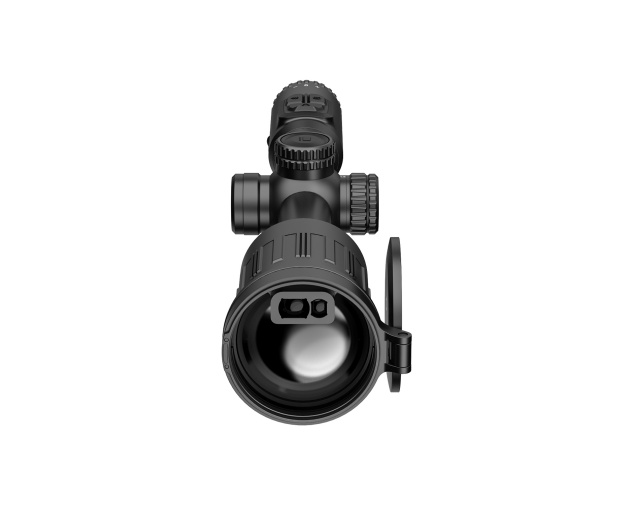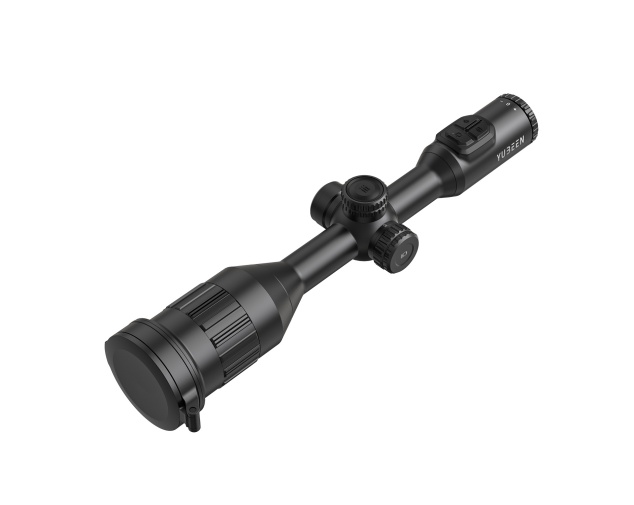What Can Damage Your Thermal Scope?
Introduction to Thermal Scopes and Their Weak Spots
You rely on your thermal scope during those critical moments outdoors, whether tracking game at twilight or spotting targets in dim light. These tools capture heat signatures to produce sharp images where regular optics struggle. Yet, they’re sensitive gadgets that can suffer from daily mishaps or harsh weather. Protecting your gear ensures it works when you need it most.

Discover the Yubeen range, crafted by pros who blend cutting-edge tech with rugged durability. Yubeen designs scopes that tackle real-world challenges. Their team prioritizes high-clarity sensors and sturdy frames, refined through extensive field tests. You get equipment that spots targets up to 1000 meters away and withstands heavy recoil or brutal storms. Imagine a scope that holds its aim after countless shots or stays clear in pouring rain—that’s the edge Yubeen delivers. Check out their lineup to elevate your setup. With 1280×1024 resolution and 15mk NETD sensitivity, these scopes cut through darkness with pinpoint accuracy. Yubeen stands out by meeting user needs, offering models that balance power and portability. Whether you’re hunting big game, training for tactical scenarios, or observing wildlife, their gear delivers steady results. Visit Yubeen to upgrade your toolkit with confidence.
Environmental Threats to Your Thermal Scope
Weather elements pose serious risks to your thermal scope’s lifespan. Heat, cold, and water are the main culprits. They can harm sensors, electronics, and lenses, reducing performance over time.
Intense Heat and Sunlight
Bright sunlight can overload your scope’s sensor, causing overheating or blurry images. Point it at the sun without its lens cap, and you risk permanent damage. This happens because intense light saturates the sensor, leading to distortion or burnout. Keep your scope shaded during sunny hours. Store it in a case when not in use. Devices with strong cooling systems handle heat better. They maintain crisp visuals even on scorching days. For example, high-end models feature internal heat sinks that dissipate excess warmth, protecting delicate components.
Freezing Cold
Icy temperatures drain batteries quickly. They also fog up lenses, obscuring your view. Use your scope below -40°C, and circuits may falter or shut down. This is due to slowed chemical reactions in batteries and condensation on cold glass. Pick models built for such extremes. Robust housings prevent moisture buildup inside. Some scopes include anti-fog coatings or insulated electronics to combat cold. Check your battery levels before heading into freezing conditions. Carry spares to avoid power loss during long outings.
Rain, Moisture, and Damp Air
Water sneaks into weak seals, causing rust or short circuits. High humidity speeds up corrosion over time. A single drop in the wrong place can ruin internal wiring. Choose IP67-rated scopes that block dust and handle submersion up to one meter. These stay reliable during soggy hunts or misty mornings. Look for models with sealed gaskets and weatherproof coatings. They resist moisture better than standard scopes. Dry your gear thoroughly after wet conditions to prevent long-term damage.
Weather risks often combine with handling errors to worsen damage. Physical mishaps are next on the list.
Physical and Handling Risks
Beyond nature’s challenges, rough treatment and setup mistakes can hurt your scope. Drops, recoil, and battery issues can misalign parts or strain components, leading to costly repairs.
Falls and Bumps
A single drop can throw off your scope’s optics or crack its frame. This misaligns the reticle, making shots inaccurate. Rough terrain increases this risk during hunts or tactical drills. Secure mounts lower the chance of damage. Bolt your scope tightly to a stable base. Scopes built to take 1000g shocks keep working after rugged trips. Their reinforced bodies absorb impacts that would ruin weaker models. Always check your mount before heading out. A loose screw can lead to a costly fall.
Heavy Recoil or Loose Mounts
Powerful rifles, like those chambered in .308 or .300 Win Mag, produce strong recoil. This can loosen parts if your scope isn’t fixed tightly to a Picatinny rail. Over time, vibrations shift lenses or electronics, throwing off zero. Test your setup to ensure it holds aim. Tough designs stay steady during long shooting sessions. Look for scopes with shock-resistant internals and solid mounting systems. They maintain accuracy even after hundreds of rounds. Tighten all screws and check alignment after heavy use.
Battery Problems
Using wrong batteries or letting them drain too far harms circuits. Incompatible power sources can overheat or fry electronics. Over-discharge weakens battery life, leaving you stranded mid-hunt. Stick to approved power sources with smart energy systems. These ensure all-day use without failure. Some scopes feature low-battery warnings or power-saving modes to stretch runtime. Charge or replace batteries before each trip. Store spares in a dry, cool place to maintain their charge.
These risks tie to your habits. Simple care can prevent most troubles. Let’s look at mistakes to avoid.
Mistakes You Should Skip
Your daily actions matter. Small errors in handling or care can shorten your scope’s life. Avoid these pitfalls to keep it in top shape.
Bad Cleaning Habits
Harsh cleaners, like alcohol-based sprays, scratch lenses or strip coatings. This clouds your view and reduces image quality. Use soft microfiber cloths instead. Wipe gently to remove dust or smudges. Avoid abrasive materials like paper towels. They leave tiny scratches that build up over time. Clean after each use, especially in dusty or wet conditions. This preserves high-clarity views for years.
Careless Storage

Storing your scope in extreme heat or cold warps parts. Temperatures above 50°C soften plastics or adhesives, while sub-zero conditions crack seals. Keep your scope in a cool, dry spot. Use padded cases for travel. They cushion against bumps and block moisture. Never leave your scope in a hot car or damp bag. Check storage conditions regularly to avoid surprises.
Consider the Thermal Imaging Riflescope – Y65L. It’s a tough performer with aluminum alloy construction and IP67 sealing. It shrugs off shocks, water, and dust. Its 50Hz refresh rate cuts noise in rough conditions, ensuring smooth visuals. Ballistic modes boost accuracy for long-range shots. Hunters praise its 1000m laser rangefinder for steady work across forests, fields, or mountains. The Y65L’s design makes it a go-to for harsh environments, outlasting many competitors.
Let’s explore why such strong designs stand out in the field.
Why Top-Notch Scopes Shine in Toughness
High-quality scopes like the Y65L excel in ruggedness. Military-grade materials resist wear and tear. You get 1280×1024 imaging that stays crisp every time. Built-in safeguards stop sensor overload, even in bright light. Easy zeroing profiles save time and keep shots on target. The Y65L’s aluminum body handles drops and recoil better than plastic alternatives. Its CMOS sensor delivers sharp images in fog, rain, or darkness.
Field users report less downtime in varied settings. Hunters in dense woods or open plains rely on the Y65L’s 1000m rangefinder for precise targeting. Its long-lasting battery powers through all-day hunts without fading. Ballistic modes adjust for wind or distance, giving you an edge over standard scopes. The Y65L’s 15mk NETD sensitivity picks up faint heat signatures, spotting game others miss. It’s perfect for your needs, whether you’re stalking deer or training at the range.
To make the most of these strengths, follow proper care routines.
Smart Ways to Care for Your Scope
Check your scope often. Inspect lenses for dust or scratches. Clean gently with microfiber cloths. Check seals for wear or cracks. Store in a cool, dry place to avoid heat or moisture damage. Use padded cases for travel. They protect against jolts and keep out dirt. Test your battery before each outing. Replace it if it’s low. Check mounts for tightness to prevent recoil issues. These steps tap into your scope’s tough build, ensuring top performance for years.
If problems arise, don’t hesitate to seek expert help.
Expert Support and How to Reach Out
Repairs, tuning, and warranties keep your gear in peak condition. Visit the website or email for personalized advice. Pros guide you through fixes, from lens cleaning to recalibration. They ensure fast solutions so you’re back in the field quickly. Reach out for tips on maintaining your scope or handling warranty claims. Expert support makes all the difference in keeping your gear reliable.
FAQ
Q: How do I stop my thermal scope from overheating?
A: Keep it shaded from bright sun. Use models with cooling features. Avoid long exposure on hot days. Store in a cool case when not in use.
Q: What if my scope gets wet?
A: Dry it quickly with a soft cloth. Check seals for damage. IP67-rated units bounce back fast. Store properly after to avoid rust.
Q: Can recoil harm my scope over time?
A: Yes, but tough designs with 1000g shock resistance hold up. Mount tightly to a Picatinny rail. Check alignment often to ensure accuracy.
